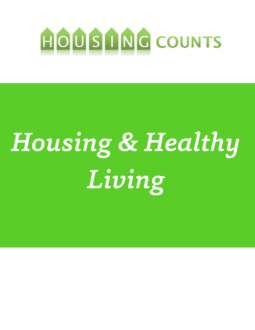Support Active, Healthy Living
Housing policy can support active living as way of life that improves health and quality of life for communities. It is ideal to see housing choices integrated with businesses, vibrant public spaces, and connected to transportation options. This will enhance neighborhood character, community livability, and quality of life.
Many land uses patterns have made walking, biking and public transit less safe and practical. Communities that safely accommodate all modes of transportation including bicycling, walking, driving and transit provide for more physical activity. A recent study shows that 43 percent of people with safe places to walk within 10 minutes of their home met recommended activity levels. By comparison just 27 percent of those without safe places to walk were considered to be active enough.
The Institute of Medicine recommends fighting childhood obesity by altering ordinances to encourage construction of sidewalks, bikeways, and other places for physical activity. Safety, and perceptions of safety, can also be increased by lighting and visual monitoring of streets and sidewalks by neighbors. Separating the bike trails from traffic is another way to limit accidents and increase usability.
A report of the National Conference of State Legislators found that the most effective policy avenue for encouraging bicycling and walking is a design paradigm known as complete streets. Complete Streets are roadways designed and operated to enable safe, attractive, and comfortable access and travel for all users. Pedestrians, bicyclists, motorists and public transport users of all ages and abilities are able to safely and comfortably use a complete street.
When communities provide safe opportunities to walk or bike, these pedestrian connections usually enhance the public realm and provide connections to open spaces. Access to parks and open spaces provide for organized recreational opportunities that are recognized to be beneficial for mental health. Complete Streets can contribute to an overall healthier and more vibrant community.
How do communities housing and active living in planning and design?
One initial step a community can take to better understand what they can do is to conduct a Health Impact Assessment. A Health Impact Assessment (HIA) identifies and evaluates the effects of policies, plans, programs, and other designs on health. HIAs come in a variety of forms, ranging from awareness raising, rapid-assessment methods to more data intensive approaches.
In general, traditional HIAs are led by public health experts, focused on the social environment (e.g., crime, economic development, affordable housing, etc.) and are linked to broad health outcomes. Design for Health (DFH) offers three HIA tools that target planners by focusing specifically on health issues related to urban and comprehensive planning.
Design for Health (DFH) is a collaborative project between the University of Minnesota, Cornell University, and the University of Colorado which serves to bridge the gap between the emerging research base on community design and healthy living and the everyday realities of local government planning. The first phase of DFH (2006-08) created innovative, practice-oriented tools to help integrate human health into urban planning and environmental design in nineteen partner communities. The second phase is focused on tool development and public education.
